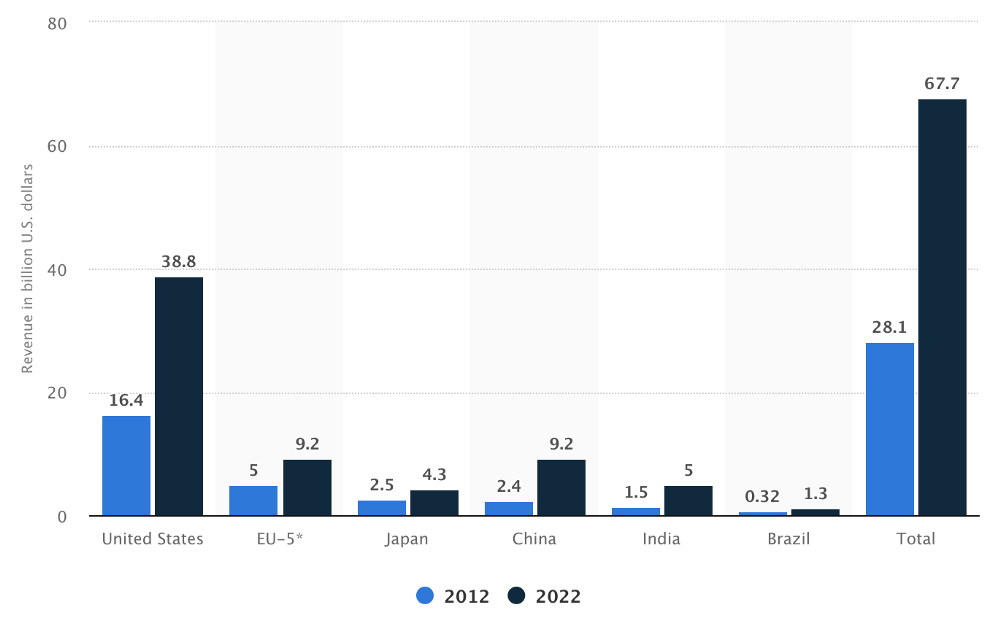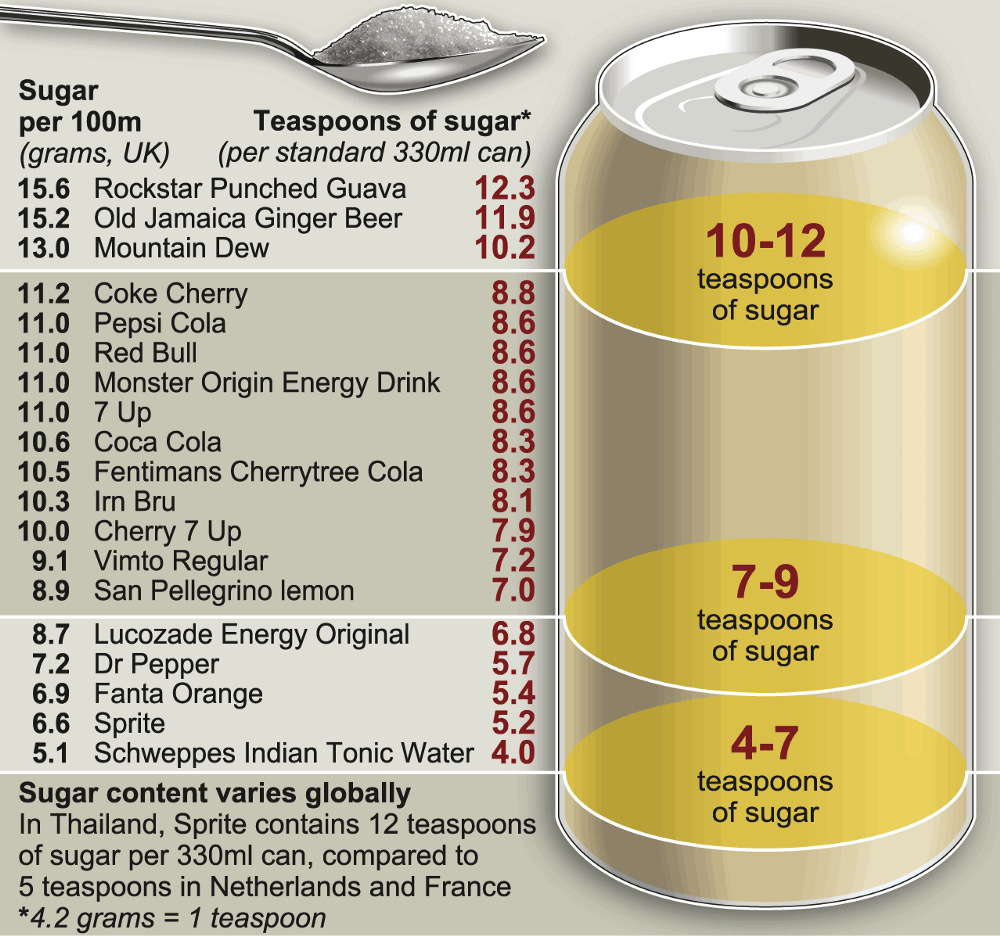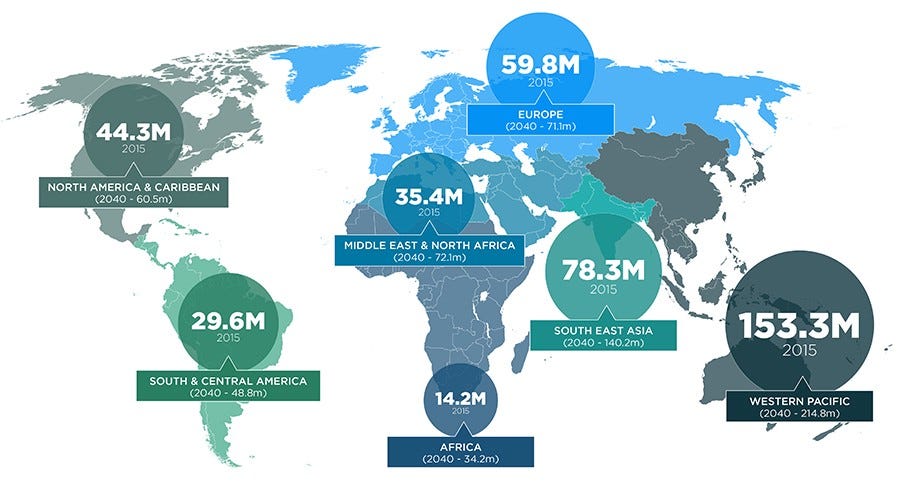Sugar Is The New Tobacco.

How do we paint a picture that excess sugar and poor dietary choices are killing us and our children? How is this happening? Why is this a problem? What is the taxpayer cost? What can we do about it?
How it all starts?
When people eat a food containing carbohydrates, the digestive system breaks down the digestible ones into sugar, which enters the blood. As blood sugar levels rise, the pancreas produces insulin, a hormone that prompts cells to absorb blood sugar for energy or storage.
The more carbohydrates you consume, the more insulin you create, and eventually your body cannot manage the overproduction, leading to a cascade of symptoms and diseases
What am i eating for this to happen?
Here’s a list 10 Foods highest in carbohydrates
- Sugars, Syrups & Sweeteners
- Candies (Jelly Gumdrops, etc…)
- Cereals (Frosted Rice Crispies, etc…)
- Snacks (Fat-Free Potato Chips, etc…)
- Cookies & Cakes (Fortune Cookes ,etc…)
- Refined Flours (White, All-Purpose Flour)
- Jams & Preserves
- Bread, Toast, Bagels, Pizza (Cinnamon-Raisin Bagel, toasted)
- Potatoes (Hash Browns, etc…)
- Sugary Drinks (Cola, etc…)
“Sugary drinks are the alcohol of childhood“
Robert Lustig, Professor of Paediatric Endocrinology at the University Of California, San Francisco
What happens when i have too much sugar in the blood?
Overtime, you become insensitive to insulin and develop any or many of this diseases
- Heart disease
- Type 2 diabetes
- Gangrene
- Blindness
- Liver failure
- Arteriosclerosis
- Acanthosis nigricans
- Polycystic ovarian disease
- Cancer (Endometrial cancer, Esophageal adenocarcinoma, Gastric cardia cancer, Liver cancer, Kidney cancer, Multiple myeloma, Meningioma, Pancreatic cancer, Colorectal cancer, Gallbladder cancer, Breast cancer, Ovarian cancer, Thyroid cancer)
“Sugar is the new tobacco”
Simon Capewell, Professor of Clinical Epidemiology at the University of Liverpool, UK
Everyone is a little bit fat, how is this going to affect me?
Here are some facts
- 75% of Americans will be overweight, making it the fattest country in the OECD by 2020. Franco Sassi
- 86% of U.S. adults would be overweight or obese by 2030
- The lifespan of an obese person is up to 8–10 years shorter than that of a normal-weight person
- 40% of all U.S. cancers are related to overweight and obesity
- 3.5% cases of cancer in men and 9.5% in women were due to overweight or obesity in U.S. (2012)
- If you are fat, you are likely to have Pre-diabetes or Diabetes.
Prediabetes
- The CDC and Prevention National Diabetes Statistics Report suggested that 37% of USA adults older than 20 years and 51% of those older than 65 had prediabetes in 2009–2012. 86 million in USA.
- Globally, 343 million in 2010 or 7.8%, increasing to 471 million by 2035
- One in two (46.5 per cent) adults with diabetes is undiagnosed
Diabetes
Diabetes is the world’s fastest growing chronic condition. Type 2 diabetes caused 1.5 million deaths globally in 2013. Higher blood glucose caused an additional 2.2 million deaths. Every six seconds a person dies from diabetes
- One in two (46.5 per cent) adults with diabetes is undiagnosed
- One in seven births is affected by gestational diabetes
- Type 2 diabetes 8th cause of death in the world 1,497,371bn deaths
- Almost 600 million will have diabetes by 2035
- One amputation every 7 min could be directly attributed to diabetes in OECD countries. 2011
- The World Health Organization estimates that 50 percent of people with diabetes die of cardiovascular disease, such as heart disease and stroke
- Diabetes is primary cause of kidney failure in 44 percent of all new cases in 2011
What is diabetes?
Type 1: insulin-dependent diabetes
Type 1 diabetes is classically an autoimmune disease in which your immune system destroys the insulin-producing cells of your pancreas, resulting in an inability to produce any significant insulin which that, if left untreated, will cause death in days to weeks from a hyperglycemic coma.
Type 2: non-insulin-dependent diabetes
In type 2 diabetes, the pancreas is producing some insulin, in fact usually too much, but is unable to recognize the insulin and use it properly. This is an advanced stage of insulin resistance, which is typically caused by a diet that is too high in sugars and sugar-forming foods.
Type 3 Diabetes or Alzheimer’s disease
A growing body of research suggests there may be a powerful connection between the foods you eat and your risk of Alzheimer’s disease and dementia, via similar pathways that cause type 2 diabetes.
How is this relevant in Australia?
- 63.4 % of the adult population is overweight (6.3 million or 35%) or obese (4.9 million or 28%) . Michael Frost. Australian Institute of Health and Welfare
- 27.9 % of population is obese (15 years+) with BMI>30
- The rate of obesity continues to increase, reaching 28.3%, higher than the OECD average of 18.0%.
- One in 4 children aged 5–17 (27%, or 1 million) were overweight or obese (ABS 2015).
- 8% of boys and girls aged 5–12 are obese. (2007–08)
- 16% of boys 5–12 yrs are overweight. (2007–08)
- 17% of girls 5–12 yrs are overweight. (2007–08)

What about Diabetes in Australia?
- Around 1.7 million Australians have diabetes and new cases are being diagnosed at the rate of 280 per day.
- Type 2 diabetes is the 7th cause of death (4,264m deaths), in comparison, Alcohol is the 35th cause of death (405 deaths), Suicide is the 11th cause of death (2,679 deaths)
- Diabetes is the leading cause of preventable blindness in Australia
- More than 72,000 people in Australia have diabetic retinopathy (leading cause of blindness and affects up to 80 percent of people who have had diabetes for 20 yrs or more)
- More than 4,400 diabetes-related amputations are performed
- Diabetes foot disease costs around $875 million every year
- Diabetes costs is an estimated $14.6 billion
- Diabetes and cost of obesity was $58 billion in 2008
- Spending on prevention is 1.8% of the current health expenditure, lower than the OECD average of 2.9%
What can i do about it?
Reversing type 2 diabetes is possible to be done free under any trained physician. Dr. Jason Fung and Dr. Joseph Mercola are amongst many of the many physician that can provide you with solutions for a cure.
Follow the leading research, not the money

While there are several treatments to reverse type 2 diabetes without drugs, generally is treated with drugs. The most popular Type 2 diabetes drugs are: Lantus, Levemir, Humalog, NovoLog, Humulin, Januvia, Janumet, Victoza, Trulicit and Invokana.
Their combined global annual sales in 2012 were $US 28.1 billion and an estimated $U S67.7 billion by 2020
What is the Australian government doing about it?
Sugar, money and the food industry
- Sugar is Australia’s second largest export crop, after wheat, with a total annual revenue of almost $2 billion
- In Australians consume 1.28 billion litres of soft drink annually
- The Australian soft drink market size was valued at 9.025 billion Australian dollars.(2014)
Welcome to the #sugartax
The #sugartax or Sugary drink tax designed to reduce consumption of drinks with added sugar, drinks covered under a soda tax often include carbonatedsoft drinks, sports drinks and energy drinks

Starting in 2018, United Kingdom will successfully tax drinks with more than five grams of sugar per 100ml and are levied by 18p per litre, while those with eight grams or more of sugar per 100ml will have an extra tax of 24p per litre.
The Department for Education is expected to receive an extra £1bn ($1.77bn AUD) from the sugar tax in 2018. Money raised will double dedicated funding for sport in every primary school.
George Osborne, Chancellor of the Exchequer (2010 to 2016), remarked “No matter how difficult and how controversial it is, you cannot have a long-term plan for the country unless you have a long-term plan for our children’s health care”.
Fairfax Media reports that other countries do have a similar tax — Scandinavian countries, Hungary, Mexico and France, Chile, the Californian city of Berkeley and Dominica.
In 2014 Australian Beverages Council (ABC) commissioned a poll and found that two-thirds of Australians feel a tax on soft drinks would be ineffective in reducing obesity and the majority of those surveyed were against the introduction of such a tax. The ABC is an industry group that represents the interests of Australian manufacturers, importers and distributors of non-alcoholic beverages, they are paid by the companies that profit selling drinks with sugar (12-ounce can of regular Coke contains 39 grams of total sugar = 9 1/3 teaspoons of sugar)
Neither Prime Minister Turnbull nor Bill Shorten would not back a sugar tax. Turnbull comments “Australians pay enough tax at the moment. I don’t believe that another tax is going to be what Australians need or want at this stage”
Obesity Policy Coalition leads a plan drawn up by a group of 34 leading health and community groups including the Cancer Council, Heart Foundation, several universities and Nutrition Australia.
- Time-based restrictions on TV junk food advertising to kids
- Set clear food reformulation targets
- Make the Health Star Rating mandatory by July 2019
- Develop a national active transport strategy
- Fund weight-related public education campaigns
- Introduce a 20 per cent health levy on sugary drinks
- Establish a national obesity taskforce
- Develop and monitor national diet, physical activity and weight guidelines.
I am overweight but not pre-diabetic, why should i care?

Global diabetes prevalence and growth from 2015–2040. https://goo.gl/puopkB
Perhaps the problem is that so many people are overweight, that it has become a norm, it doesn't present itself as a threat anymore, it's everywhere. Soon the lines between overweight and obese blur out, after all, only in 2013, the American Medical Association classified obesity as a disease.
In the UK, 36% of adults thought they were overweight when they were actually clinically obese, while the The World Health Organization (WHO) regards childhood obesity as one of the most serious global public health challenges for the 21st century.
Remember, obesity is a leading preventable cause of death worldwide, the “Diabesity” epidemic (obesity and type 2 diabetes) is likely to be the biggest epidemic in human history.
The reason why diabetis is called silent killer is because over half of people diagnosed with Type 2 diabetes did not even suspect they could have the condition, as they failed to identify its early symptoms.
Insulin sensitivity and longevity
In humans, preserved insulin sensitivity has been associated with longevity. Insulin resistance has been shown to predict the development of age-related diseases, including hypertension, coronary heart disease, stroke, cancer, and type 2 diabetes. As mentioned above, the more carbohydrates you eat, the more insulin your pancreas produces and more glucose starts to be released into the bloodstream.
Enjoyed this post? Give it a like 👍, share with your network 🌐, and drop your thoughts in the comments 💬. Your engagement helps us spread the word even further!
Citations:
www.ncbi.nlm.nih.gov/pmc/articles/PMC1693790/
www.ncbi.nlm.nih.gov/books/NBK532266/
www.ncbi.nlm.nih.gov/pmc/articles/PMC9966020/
www.ncbi.nlm.nih.gov/pmc/articles/PMC9381199/
www.ncbi.nlm.nih.gov/pmc/articles/PMC7912123/
www.uptodate.com/contents/vitamin-d-deficiency-beyond-the-basics
www.bmj.com/content/381/bmj-2022-071609
www.lpi.oregonstate.edu/mic/micronutrient-inadequacies/overview
www.aafp.org/pubs/afp/issues/2009/1015/p841.html
www.ncbi.nlm.nih.gov/pmc/articles/PMC5133084/
Thanks for reading my blog. Subscribe to get actionable insight to improve your mental or physical health backed by medical research. Experience a deep dive every Saturday and a quick two-minute read on Tuesdays.




